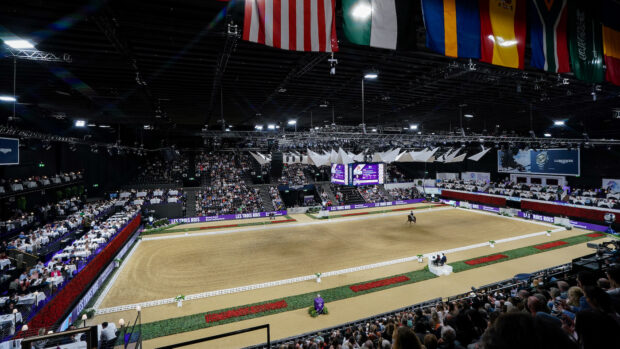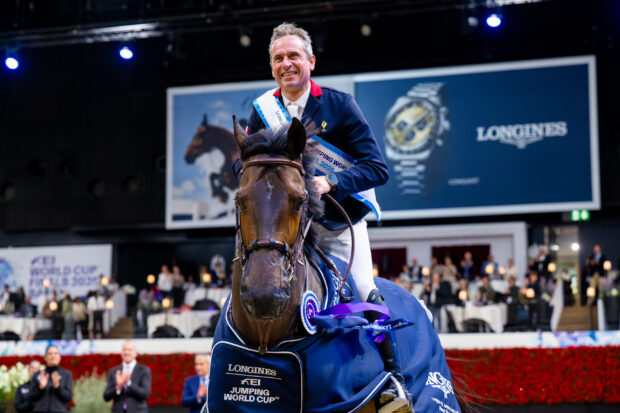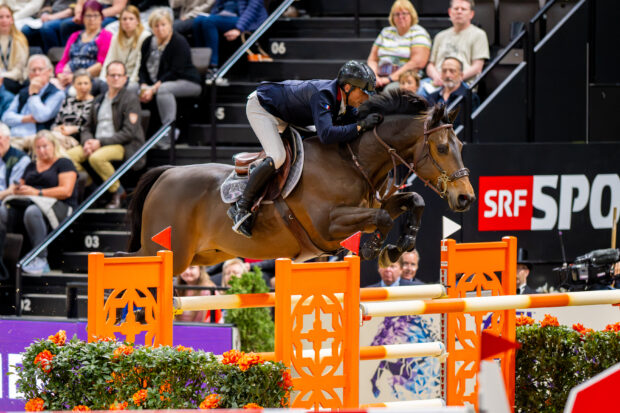Designer Anthony d’Ambrosio has told H&H he feels his courses were “appropriate” after criticism from top riders of the tracks at last week’s (19 April) Longines FEI World Cup final in Las Vegas.
US rider McLain Ward, who took 20th place after retiring in the first leg of the third round after a refusal, said on Facebook: “For me it was the worst sport I have seen in any championships in my career.”
He went on: “I am always to [the] first to look to myself for reasons why I did not succeed but I have to say this is the most beaten I have felt in any recent memory. I honestly felt I could not find a way to answer the test presented by riding well, forward and smooth. It seems that the majority of the other riders faced the same challenge as I did…
“I have never seen so many top horses stop, crash and seem totally lost or so many top riders having to pull and kick there [their] way to simply get in range of a good distance. The problem was not the height or width but was the approach to many of the fences.
“This week’s designer was a great rider and has been a top designer but just as we as riders and trainers must reflect on the job we do and our own performance so must course-desigers to create a test that not only challenges the best but also produced great and fair sport.”
McLain’s comments have had over 2,500 likes. Australian competitor Edwina Tops-Alexander — who retired after a refusal at fence three in the opening speed leg — commented: “Well your words definitely sums it all up. Thanks for the honesty and the professionalism.”
In an interview on showjumping website www.noellefloyd.com, conducted before the final leg of the competition, German triple World Cup champion Marcus Ehning — another who retired in the opening leg — said he was “not really happy” with the first two rounds.
He said the last line for the second leg of the competition (described as Thursday in the interview, but actually taking place on Friday) “was totally unnecessary for me”, “a bit more like a joke” and “a bit unfair”. This line consisted of a verticle (fence 11), five or six strides on a left-hand turn to the treble (fence 12abc) and on to the left to the final upright (fence 13). Twenty-three riders of the 35 who started in this leg had faults at the treble.
Some criticisms of the track, including on Horse Collaborative, have focused on the fact champion Steve Guerdat crashed through the final fence on the way to victory. The winner said afterwards he didn’t care if he had this oxer down because he knew he could afford to do so provided he didn’t have a time-fault, so he focused on reaching the finish line within the time, regardless of whether the fence fell.
American course-designer Anthony d’Ambrosio has defended the courses, telling H&H: “I have read the comments made by McLain Ward and Marcus Ehning, two individuals for which I have great respect. I truly wish it had gone better for both of them at the final.
“As to the courses, I stand behind them, and feel that although there were some tough questions asked, such as the triple in friday’s final II [second leg], they were appropriate for a World Cup final, and made the best of the confines of the arena.
“In the end, I believe we had a good result each day, and I am impressed with how many young riders finished in the top 12. The future of the sport looks very strong. I congratulate all of the riders who took part, and admire them for their efforts during the week. I am happy to have been designing when Steve Guerdat won the title that had eluded him so many times. He is a fantastic rider and horseman.”
Full report of the World Cup finals in H&H this week, out Thursday 23 April.




